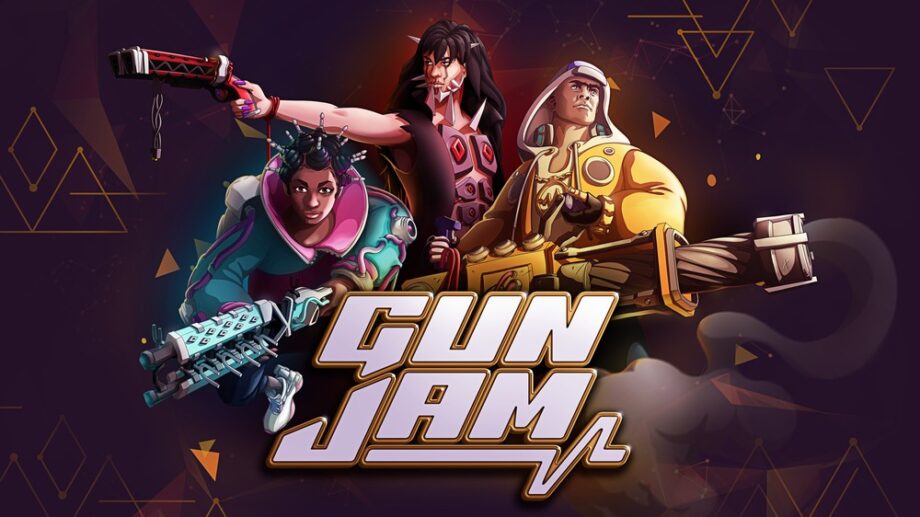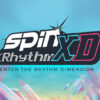The road from when a game is first revealed to out on the shelves is long and confusing. It’s easy for games to go through many changes to get to where they are now. Concepts and ideas are tested and proven to work or fail all the time as they are developed and pushed along the development line. It’s very often for some ideas that sound cool or worked in the past to not make it to the final game. It’s even common for people who know about the development history to prefer some parts that were canned to what was in the final game. However, hearing people say the final game is worse than an earlier build is a lot less common, and unfortunately, Gun Jam jammed at the last possible moment and became such an example.
There really isn’t much of a story here. That’s because the game is more focused on being like an arcade game than a traditional game. This is both its biggest strength and biggest weakness. The main gameplay is you attacking enemies in time to the rhythm being played; basically, think Hi-Fi Rush but less action adventure and more arcade.
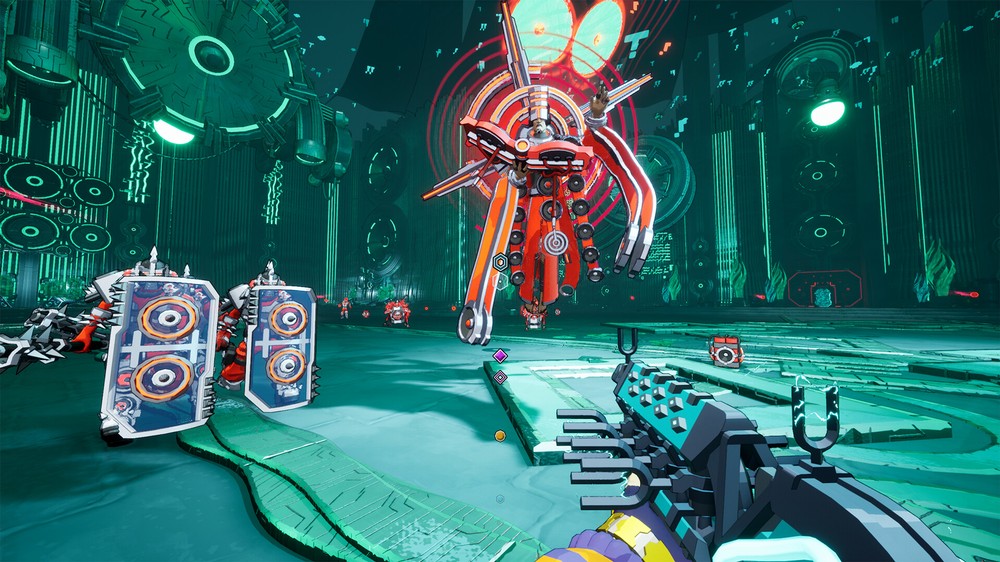
You play as three characters, Tap, Aero, and Ballard. There are four maps in the game; Gun Jam Arena, City Streets, Sonic Prison, and Noise Maze. Each map locks you to one character you play in each level. You can’t select your character, just the music that plays during each level. You can move around as much as you want, from walking to jumping. However, to dash and attack, you must wait for beats during the song to match up. There’s an indicator in the middle of the screen telling you when to attack. Fully colored circles overlapping with the pointer means you have to tap, and outlined shapes mean you can just hold down the attack button. You can just hold down the attack button and always attack, but you won’t get a good score. In addition to shooting, you can either dash to evade or get to other places or use your kick to melee attack enemies. Kicking down enemies with shields is very useful and helps create an opening to fire on them.
When you do shoot, the gun that fires varies on what color it is. Blue circles have you shoot a railgun, usually popping up for half-beats. This is a standard gun with good range options. Yellow circles that pop up on full beats have you use a double-barrel shotgun, perfect for shredding close-range enemies. Purple circles usually come in patterns, with you just hitting once and holding down to attack enemies either close or far away from you. Red blast symbols mean you are shooting a rocket launcher, perfect for destroying the bulkier units. When your overdrive gauge is full, you can activate it to do a character-specific ability. Tap’s overdrive ability lets them do quadruple damage, Aero’s ability is bullet time, with all the projectiles of the enemy team slowing to a crawl, and Ballard’s move has him use melee attacks to instantly shred foes apart.

What you get and how fast you get it all depends on the music being played. In the song list, you get to see the BPM, beats per minute, of each song, with more BPM meaning faster-paced songs with more room for attacks. The songs created for this game all sound good, but in-game, their long length means you’re playing each level for at least 6 minutes to as long as 8 minutes. While they are nice to listen to, the problem comes in just how the gameplay is structured. For three of these levels, you’re trapped in one circular arena for you to run around and shoot enemies. Some levels have you running around to avoid turrets trying to shoot you down or jumping over pits to avoid taking damage, but most of the time, it’s just you, plopped into the middle of the arena and tasked with surviving. This sounds like a solid arcade-style game, but when you’re going at it for over 6 minutes, it starts to feel old, and fast, especially when there isn’t much variety.
Near the end of the song, around when it’s three-quarters done, the boss of the place spawns. For City Streets and Sonic Prison, the boss is a gunship boss, shooting bullets and missiles at you while flying above you. Gun Jam Arena’s boss is a heavy mech, which will stay in the middle of the arena and fire explosive rounds at you. For Noise Maze, the boss is at the end of the map, so you have to beat all the enemies on your way to him. The boss is called the Angel boss, who will fill the screen up with bullets that you have to avoid while hitting him. Each map forces you to stay as a certain character, as while it lets you mix and match music and levels, changing which character you use on each level is not allowed. This just feels like a pointless restriction, plain and simple. Not to kick the game while it’s down getting mixed reviews, but even Balan Wonderworld allowed you to use costumes in other worlds than where you found them. To say that it’s embarrassing that Gun Jam didn’t even do something that a game that has only one button controls still had the foresight to do would be an understatement.
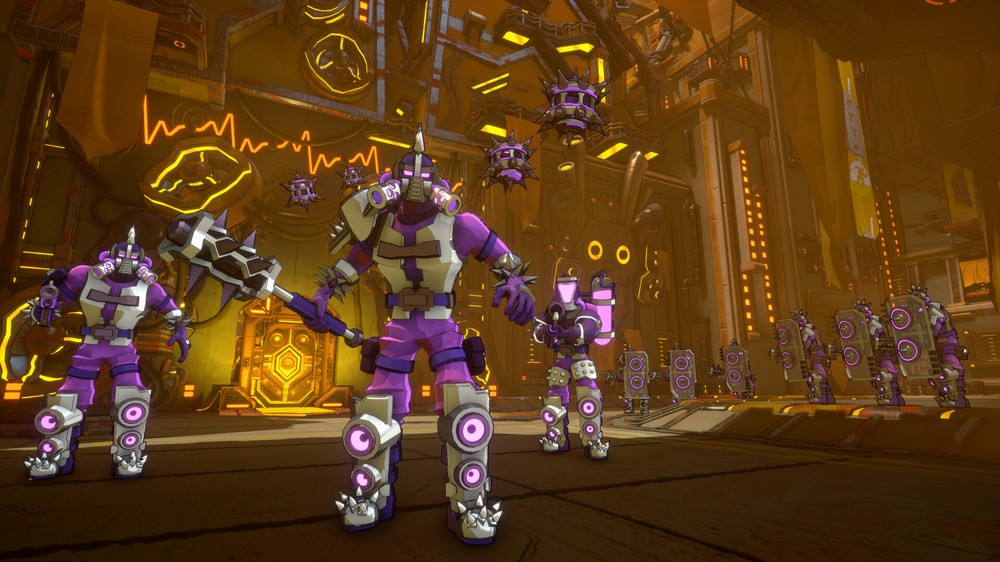
This is where the game’s most unique feature comes in; letting you import your own music by the use of its song import system. By creating a folder in the game’s files and naming it “Music”, any tunes you place in there can be used in the game. Testing it out on a couple of songs, it appears that the auto-detection tool it uses to determine beats and how to interpret their beats for attacks, with repeat verses having similar attack patterns to utilize. Still, there are plenty of times when the song I chose still has some moments where there are no attack prompts, even when the beats, be it full, half, or quarter, pop in. Given how it’s not even exclusive to imported songs, it shows that the tool still needs redefining. However, I never really felt defenseless or helpless when the tool didn’t work fully, so while it can stumble a bit, it still does have enough good to be considered a positive, especially with importing other songs. It helps bring in content to provide life and longevity in a game that really needs it…
As stated before, three of these maps are just circles, with only one map really having a sense of progression. The enemies that spawn are robots that charge after you and attack you, either by getting up close, lunging at you, or flying through the air and firing bullets at you. At the top of the screen, you can see how many enemies are left alive in the room before a new batch is brought in. When the counter reaches zero, you’re pretty much left to your own devices till the next wave. Besides fighting enemies, you can run around trying to collect blue orbs to fill up your overdrive meter or look around for health pickups.

Unfortunately, combat can be a bit of a chore. The enemies feel like they move a bit too slow, even with songs with a higher BPM. This isn’t helped by the fact that three of the maps are just one big open space. This lets enemies ambush you as whenever you’re hit, you have no way of identifying the culprit’s location. This, in turn, makes it so some hits feel a bit unfair, turning the game into looking around every single nook and cranny for the last enemy standing. The only area that has any real promise is Noise Maze. It’s a path where all the enemies spawn in front of you, giving you a clear picture of when to attack them and when to use the exploding barrels in the level to take out multiple at once, and even the bigger rooms don’t feel as big, letting the combat flow faster and feel like you’re in more control.
Maybe if the maps were bigger and couldn’t be explored so easily the long time it takes for the base game songs to finish would make sense, or if there was anything else to do besides get the best score, but as it, what you see is what you get. This is incredibly odd, as previous builds of the game seem to focus more on the linear nature of things rather than the arenas. From what I saw, the arena maps are recent additions to the game; like not even the demo had them. It feels like it was a rushed decision at best, and like the developers were conning you at worst. Still, even if the arena maps weren’t that good, even leaving the other demo levels in without updating the maps would still be good. Going down a room and shooting enemies to the beat is better than fumbling around trying to find where that last enemy is because they spawn on the other side of the huge circle. Another thing apparently cut from the game, from what I saw at least, was a story, explaining everything going on in the game. All this makes it feel that this game needed way more time to cook in the oven.
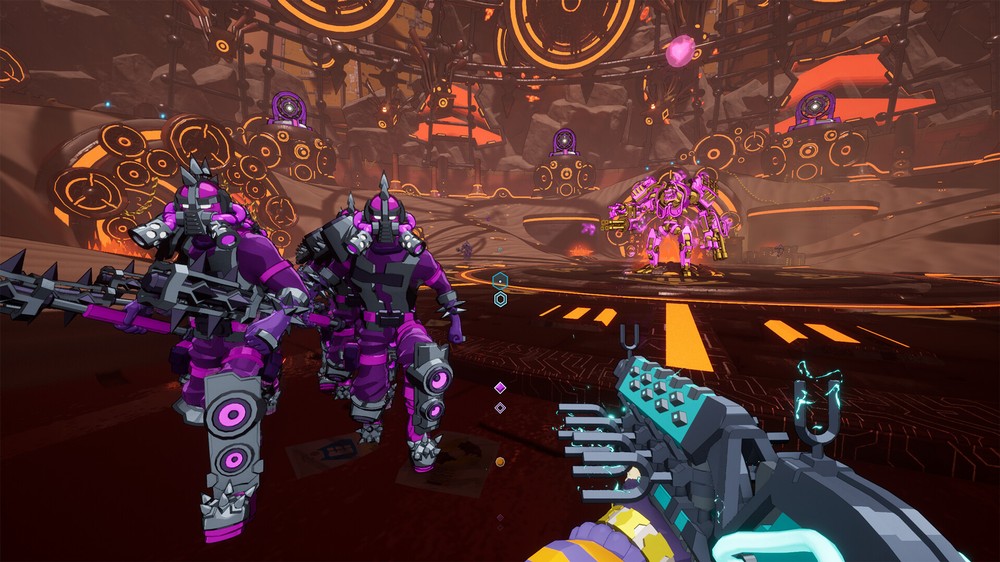
Even for $20, it feels like this game is still ripping you off. With only 4 maps and 10 different songs to choose from for each map, characters locked to select maps, and three of the four maps feeling uninspired, there is not a lot here to justify the $20 price tag. To give credit to the developers, they are aware of the feedback and currently are working on the game behind the scenes to improve it, even adding in more linear levels instead of the open-ended arenas everyone disliked. But judging from what was shown, some of those stages really should have been in the game from launch.
In the end, it is a story of a game that was pushed out too early than it was ready for. I honestly don’t understand how this game was released this obviously rushed. Heck, when it was first released in April, there were only two maps. They say that they’re working on adding more maps, but they’re going to have to do more than that to make this game feel complete and worthwhile at this point. With every passing day, they are losing more and more goodwill, so it’s crucial now, more than ever, to find ways to appease the crowd. Bringing back the linear maps, revamping the system they use to map beats, allowing more customization, bringing back the story they had, and generally making the game feel snappier and more satisfying to control, will be vital in bringing this game back from the brink. It’s nice to hear that they’re improving it, but for now, just stick with Hi-Fi Rush.

